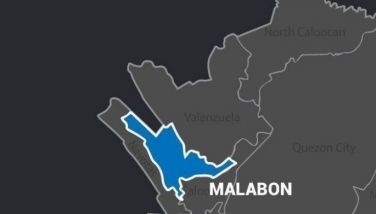Illegal drugs affect 75% of Cebu City barangays
October 5, 2001 | 12:00am
CEBU CITY — This city now stands a good chance of gaining notoriety as the number one highly urbanized city in the country to be saddled by the illegal drug problem.
This is because up to 75 percent, or 60 of its 80 barangays, have already been affected by illegal drugs, according to chilling statistics from a police situationer report.
The report surprised Gen. Miguel Coronel of the National Drug Enforcement and Prevention Coordinating Council, whose visit ironically was to prepare Cebu City as a pilot drug-free community pursuant to a project envisioned by Philippine National Police chief Director General Leandro Mendoza.
Of the 60 affected barangays, 14 are considered seriously affected, with 2.5 percent of their total population identified as either pushers or users, the report said.
Considered less affected are 18 barangays, while another 28 are said to be threatened by illegal drugs.
Of the 14 seriously affected barangays, 12 have been identified. These are Pasil, Ermita, Kamagayan, Duljo-Fatima, Mambaling, Camputhaw, Suba, Carreta, Calamba, Labangon, Tejero and T. Padilla.
"Somehow the drug problem is very serious," said an aghast Coronel in a press conference the other day.
If the figures are correct, Coronel said Cebu City stands a good chance of topping the list of highly urbanized cities with illegal drug problems.
Regionwise, Central Visayas is fourth among problem areas of illegal drugs, with the National Capital Region remaining on top.
Rep. Antonio Cuenco said the widespread illegal drug problem in the city reinforces the growing perception that the police have lost control of the situation.
"What is the Narcotics Group and our police doing? That information came to me long ago but they have done nothing," he said.
Cuenco, chairman of the House special committee on dangerous drugs, said the problem of drugs in Cebu City is already alarming.
He fears that some members of law enforcement agencies in the city like the police, particularly its anti-narcotics unit, are in cahoots with drug traffickers.
Cuenco said his committee will hold public hearings next week in connection with two pending bills related to the drug problem.
One bill seeks to make possession of 15 grams of illegal drugs such as shabu a heinous crime punishable by death. The proposal is a drastic cut from the present 200-gram minimum.
The other measure seeks to create an Anti-Drug Enforcement Agency to be supervised by the Office of the President.
Coronel agreed that the leniency of some laws appears to work in favor of those involved in drugs.
He said many arrested suspects can easily post bail because the quantities of illegal drugs seized from them do not reach the 200-gram minimum.
Coronel said the police are now banking on Congress to amend the Dangerous Drugs Law.
Cebu City police chief Hiram Benatiro tried to downplay the damning report, insisting that the volume of drugs used in the city still pales in comparison to Manila’s. — Freeman News Service
This is because up to 75 percent, or 60 of its 80 barangays, have already been affected by illegal drugs, according to chilling statistics from a police situationer report.
The report surprised Gen. Miguel Coronel of the National Drug Enforcement and Prevention Coordinating Council, whose visit ironically was to prepare Cebu City as a pilot drug-free community pursuant to a project envisioned by Philippine National Police chief Director General Leandro Mendoza.
Of the 60 affected barangays, 14 are considered seriously affected, with 2.5 percent of their total population identified as either pushers or users, the report said.
Considered less affected are 18 barangays, while another 28 are said to be threatened by illegal drugs.
Of the 14 seriously affected barangays, 12 have been identified. These are Pasil, Ermita, Kamagayan, Duljo-Fatima, Mambaling, Camputhaw, Suba, Carreta, Calamba, Labangon, Tejero and T. Padilla.
"Somehow the drug problem is very serious," said an aghast Coronel in a press conference the other day.
If the figures are correct, Coronel said Cebu City stands a good chance of topping the list of highly urbanized cities with illegal drug problems.
Regionwise, Central Visayas is fourth among problem areas of illegal drugs, with the National Capital Region remaining on top.
Rep. Antonio Cuenco said the widespread illegal drug problem in the city reinforces the growing perception that the police have lost control of the situation.
"What is the Narcotics Group and our police doing? That information came to me long ago but they have done nothing," he said.
Cuenco, chairman of the House special committee on dangerous drugs, said the problem of drugs in Cebu City is already alarming.
He fears that some members of law enforcement agencies in the city like the police, particularly its anti-narcotics unit, are in cahoots with drug traffickers.
Cuenco said his committee will hold public hearings next week in connection with two pending bills related to the drug problem.
One bill seeks to make possession of 15 grams of illegal drugs such as shabu a heinous crime punishable by death. The proposal is a drastic cut from the present 200-gram minimum.
The other measure seeks to create an Anti-Drug Enforcement Agency to be supervised by the Office of the President.
Coronel agreed that the leniency of some laws appears to work in favor of those involved in drugs.
He said many arrested suspects can easily post bail because the quantities of illegal drugs seized from them do not reach the 200-gram minimum.
Coronel said the police are now banking on Congress to amend the Dangerous Drugs Law.
Cebu City police chief Hiram Benatiro tried to downplay the damning report, insisting that the volume of drugs used in the city still pales in comparison to Manila’s. — Freeman News Service
BrandSpace Articles
<
>
- Latest
- Trending
Trending
Latest
Trending
Latest
Recommended

































